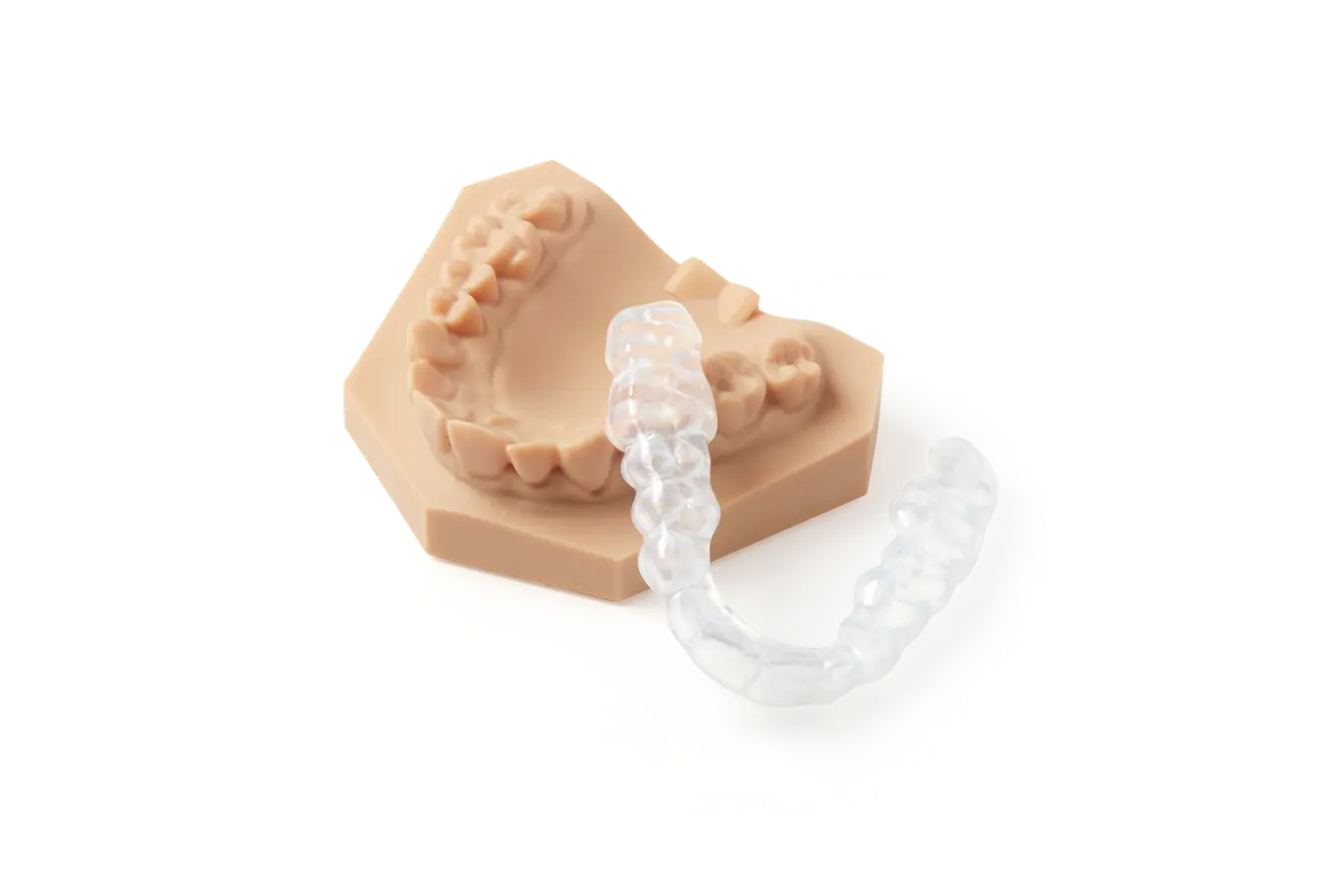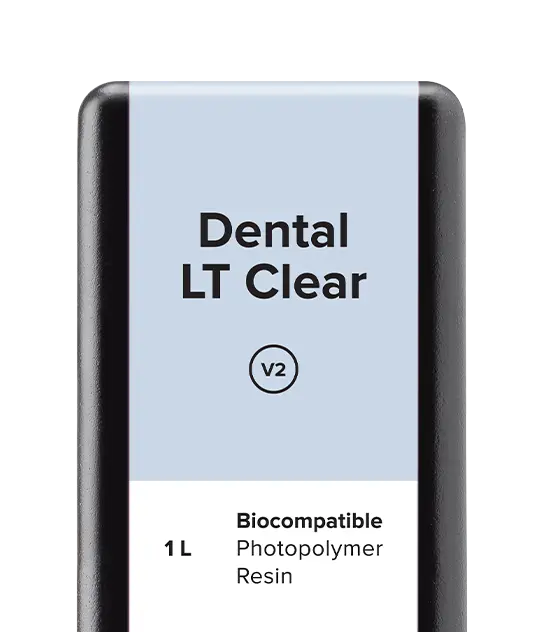Dental LT Clear V2 Resin
Dental
SLA
Robust
52 MPa
2,080 MPa
12 %
Select Printer Series and Resin Volume
| Bulk order quantity (L) | Discount % |
|---|---|
| 1 | 0% |
| 30 | 15% |
| 60 | 20% |
| 120 | 25% |
| 240 | 30% |
| 1,000 | 35% |
| 2,000 | 40% |
| 3,000 | 45% |
Read our Application Guide to learn the complete workflow and best practices for making 3D printed splints and night guards on your Formlabs 3D printer.

Dental LT Clear V2 Resin has been added to your cart.

Why Choose Dental LT Clear Resin (V2)?
Dental LT Clear Resin (V2) provides dental professionals with a durable, color-corrected material for the convenient production of long-lasting and hard occlusal splints.
High Performance
Provide fracture-resistant, durable and long-lasting bite splints to patients.
Aesthetic
Polish splints to high optical transparency, aiding in patient acceptance.
Accurate and Consistent
Run a lean and profitable workflow with consistent production of aligners.
Biocompatibility
Provide the patient and clinician the peace of mind they deserve.
Applications
Dental LT Clear Resin (V2) is Formlabs’ second-generation, long-term biocompatible material for clear bite splints.
Consider Dental LT Clear Resin (V2) for:
Material Properties*
Dental LT Clear Resin (V2)
Ultimate Tensile Strength
Tensile Modulus
Elongation
Flexural Modulus
Impact Strength (Unnotched IZOD)
Hardness Shore D
* Material properties may vary based on part geometry, print orientation, print settings, and temperature. Data were measured on post-cured samples printed on a Form 3B printer with 100 µm Dental LT Clear Resin (V2) settings, washed in a Form Wash for 20 minutes in 99% Isopropyl Alcohol, and post-cured at 60°C for 60 minutes in a Form Cure.
Post-Processing
Form Wash Settings
20 min in IPA
To ensure that finished parts are biocompatible, follow all part washing notes in the Instructions for Use. Maintain separate wash buckets for biocompatible materials. Wash for 15 minutes, then remove parts and soak in fresh IPA for 5 minutes. Do not leave Dental LT Clear Resin in IPA for longer than 20 minutes total, as excessive solvent exposure affects the quality of the final part.
Form Cure Settings
60 min
60 °C
Post-curing as recommended in the material-specific Instructions for Use is required to ensure optimal performance and biocompatibility of 3D printed dental appliances.

